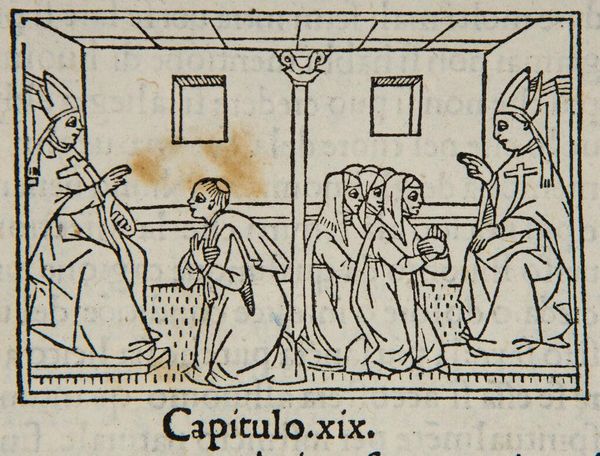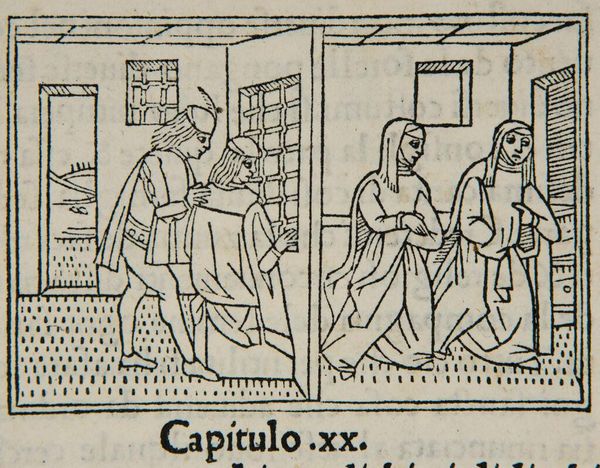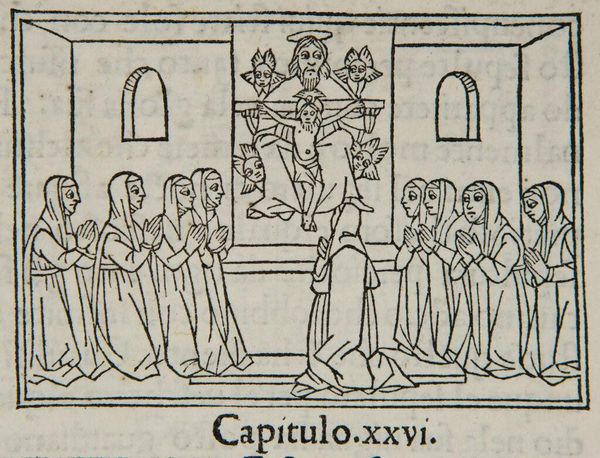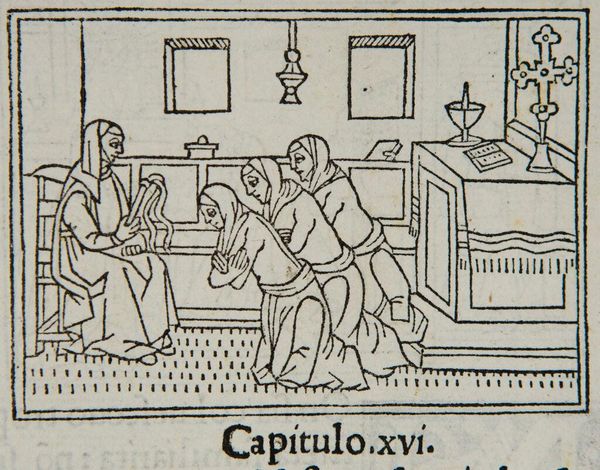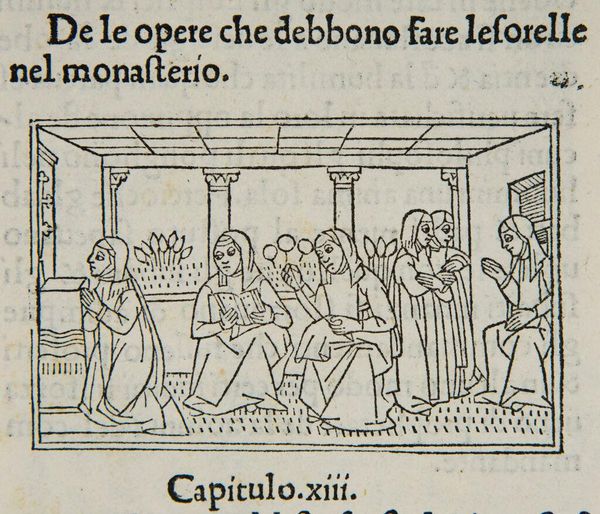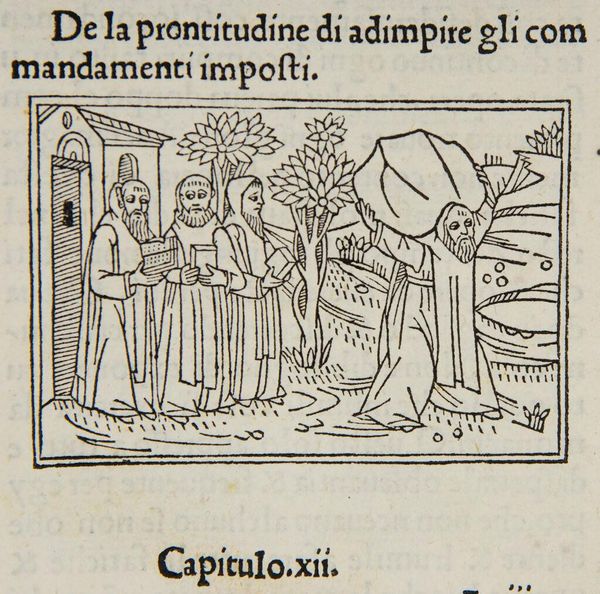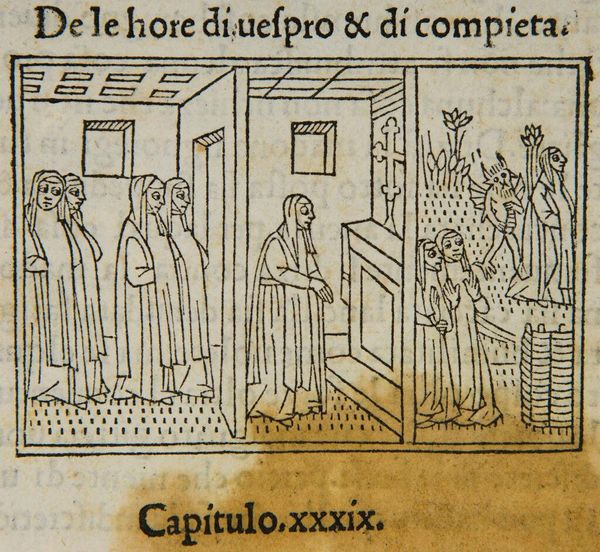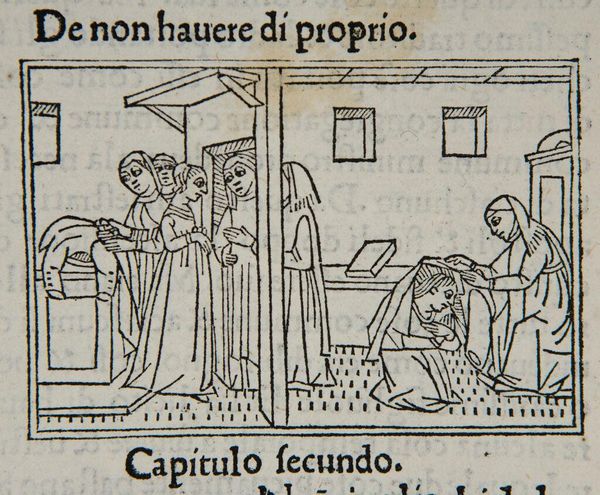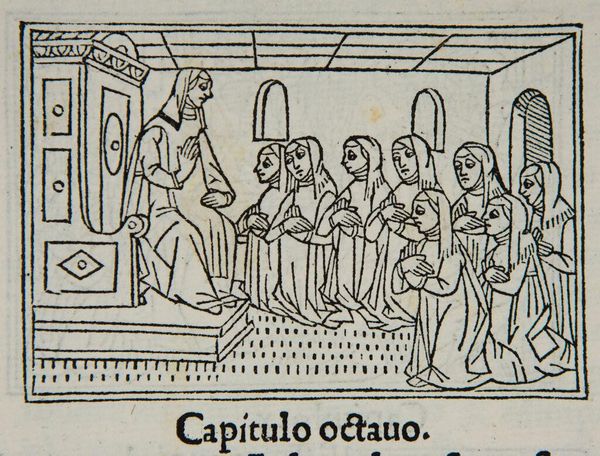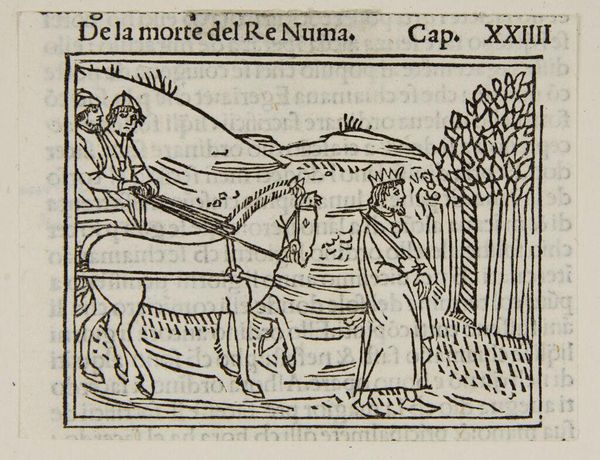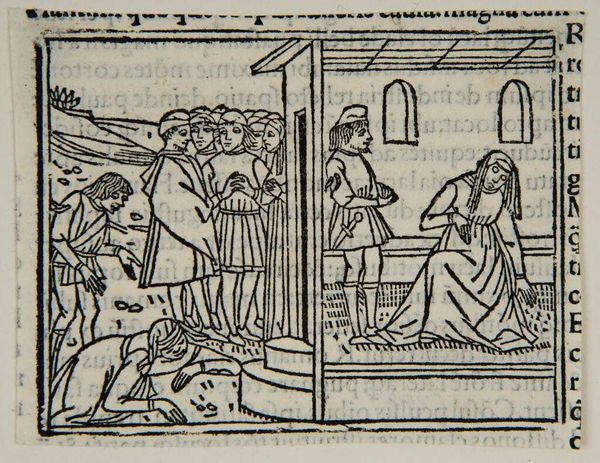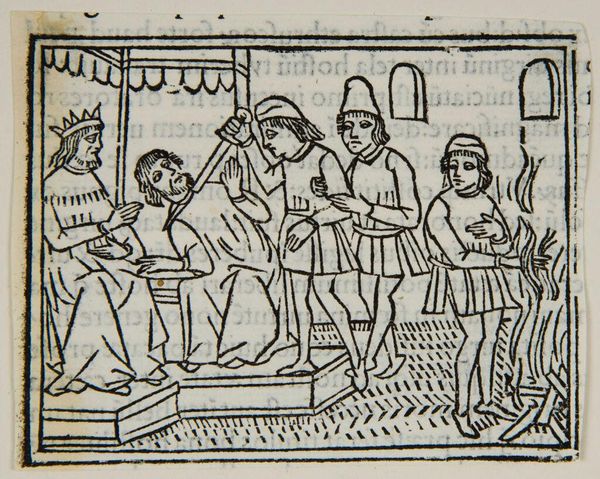
Ch. 10. On the marvelous life of the holy father that Jerome found as a hermit c. 15th century
0:00
0:00
Copyright: CC0 1.0
Editor: This woodcut, "Ch. 10. On the marvelous life of the holy father that Jerome found as a hermit," by an anonymous artist, depicts a group of men in what appears to be a garden. The figures seem serene, though there is also an air of austerity. What visual symbols stand out to you in this piece? Curator: Observe how the figures are arranged; each is distinct yet part of a collective. Consider the meaning of hands clasped in prayer. These are potent symbols of humility and piety in Christian iconography. The floral motifs could suggest paradise, a carefully cultivated space for spiritual growth, but also an indication of the hermetic tradition in Christianity. Editor: So, the flowers aren't just decorative? Curator: Not at all. They evoke ideas about humanity’s connection with nature, and the promise of renewal. Consider also the role of Saint Jerome in this narrative; does this imagery align with what you know of his life and work? Editor: It does bring to mind his dedication to scripture and asceticism. I see the connection now. Curator: It’s through these repeated symbols that the image resonates, connecting us to centuries of belief and cultural memory.
Comments
No comments
Be the first to comment and join the conversation on the ultimate creative platform.
